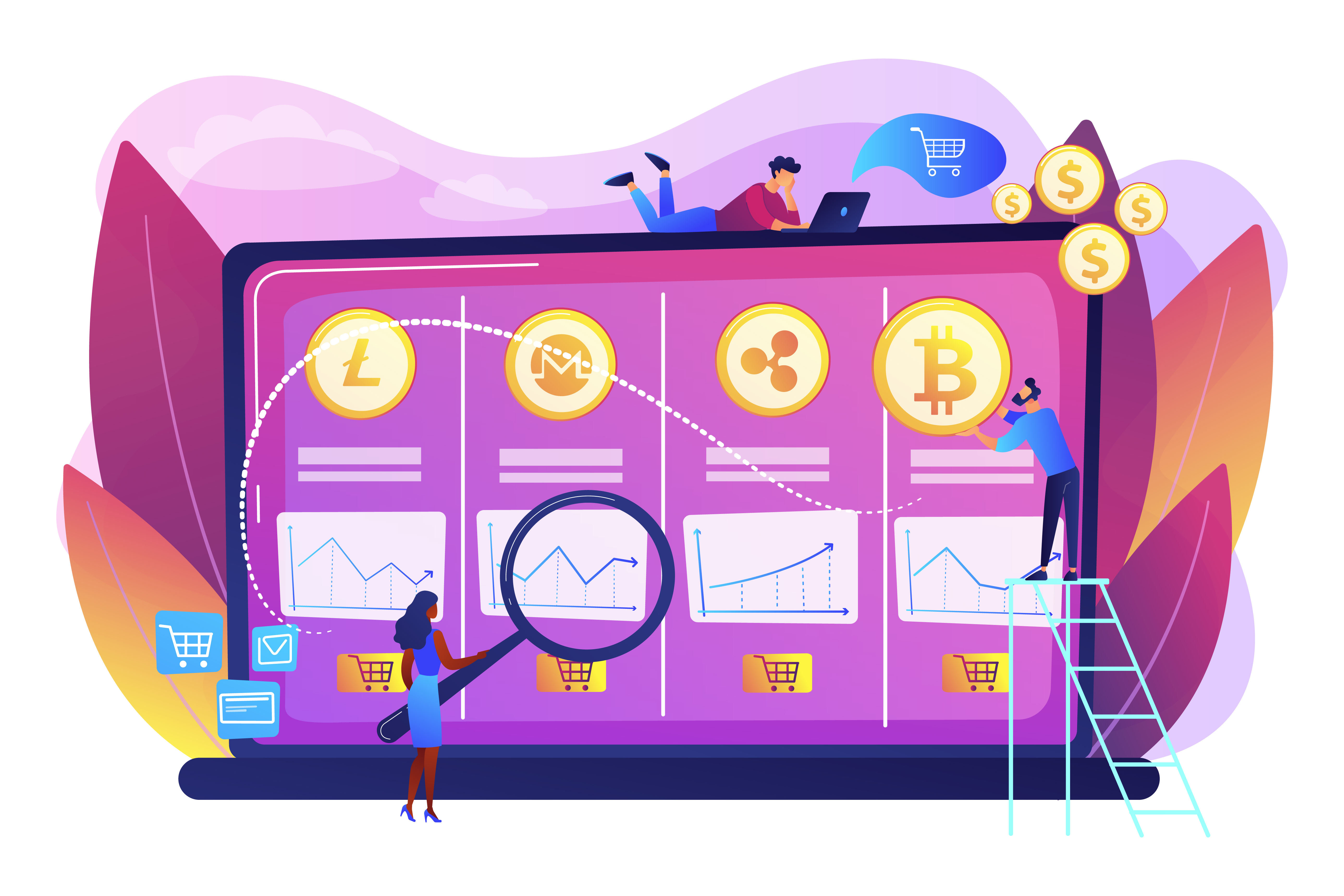 Blog Speed Optimization – Make Google & Users Happy!
Blog Speed Optimization – Make Google & Users Happy!
How Crypto Token Development Companies Will Drive Security in 2025
Written by Sneha Ahlawat » Updated on: June 17th, 2025

As we approach 2025, the crypto world is buzzing with opportunities and challenges. Crypto tokens are more popular than ever, being used for everything from trading and investments to decentralized finance (DeFi), gaming, and even NFTs. However, as this market grows, so do the security concerns. Hackers, scams, and vulnerabilities continue to target the crypto space, making security one of the most pressing issues. This is where crypto token development company come in, playing a critical role in driving security and resilience for tokens.
Crypto token development companies are expected to not only create tokens but also provide the solutions that secure them. Here’s how they will shape token security in 2025 and beyond.
Important Steps for Shaping Token Security in 2025
1. Enhanced Security Protocols
As tokens become more popular, crypto development companies will implement advanced security protocols to protect them. In 2025, it won’t be enough to have basic security features. Here are some of the key protocols that will be crucial:
Multi-Signature Wallets: Multi-signature (or multi-sig) wallets require multiple keys to authorize a transaction, reducing the risk of theft from a single compromised key. In 2025, more tokens will be developed with built-in support for multi-sig to add extra layers of security.
Cold Storage Solutions: For long-term security, tokens will be stored in cold wallets, which are offline and less vulnerable to online attacks. Token development companies are expected to integrate cold storage capabilities directly into token architecture, giving users an option to store tokens safely.
Hardware Security Modules (HSMs): HSMs provide dedicated security for cryptographic keys, essential for transaction authorization and data protection. These modules are likely to be standard features for tokens in 2025, as token developers work to keep private keys secure from cyberattacks.
By integrating these protocols, token development companies will help ensure that tokens are safeguarded against increasingly sophisticated threats.
2. Implementing Smart Contract Audits
Smart contracts are self-executing programs embedded in blockchain networks. They are crucial to token functionality but are also frequent targets for hacks. In 2025, smart contract security will be non-negotiable for token developers.
Routine Audits: Token development companies will perform thorough smart contract audits before launch. These audits will look for vulnerabilities, ensuring the code is airtight. Audits will focus on removing bugs and eliminating loopholes that could lead to exploits or unexpected results.
Automated Security Testing: Automated tools are becoming better at scanning code for potential vulnerabilities. In 2025, companies will increasingly rely on these tools to run continuous checks. This real-time auditing can quickly detect issues and prevent attacks before they happen.
Formal Verification: This is a mathematical process to verify the correctness of code. While still rare due to its complexity, formal verification is likely to grow in popularity by 2025. Token developers can use it to validate the performance and security of smart contracts, ensuring they do exactly what they’re supposed to.
Smart contract audits are one of the best ways to prevent attacks before they happen, and by 2025, they’ll be a standard practice for token development companies.
3. Advanced Cryptography Techniques
As cyber threats become more advanced, so must the cryptographic methods used to secure tokens. Token development companies will push for newer, stronger encryption methods to protect data and user funds.
Zero-Knowledge Proofs (ZKP): Zero-knowledge proofs allow one party to prove they know something without revealing the information itself. ZKPs can enhance privacy and security for crypto transactions, and we’ll see more tokens implementing ZKP protocols to secure user data.
Homomorphic Encryption: This technique allows computations on encrypted data without decrypting it. In 2025, token developers will likely explore homomorphic encryption as a way to enhance privacy and security for token transactions. While complex, it can make data far more secure by keeping it encrypted at all times.
Elliptic Curve Cryptography (ECC): ECC is faster and requires less computational power than traditional encryption methods. As mobile and IoT devices increasingly interact with blockchain, ECC will be essential for maintaining security without slowing down performance.
With these cryptographic methods, token development companies will help make tokens more resistant to hacking and other cyber threats.
4. On-Chain Governance Models
Security isn’t just about keeping tokens safe from hackers; it’s also about making sure the community has control. On-chain governance models allow token holders to participate in decisions about the token’s future, including security policies.
DAO Structures: Decentralized Autonomous Organizations (DAOs) are a popular governance model that token developers are integrating into their projects. DAOs allow for community-driven security measures, as users can propose and vote on changes to the token’s security features.
Self-Upgrading Tokens: Some tokens will have the ability to upgrade their own code based on community votes. This means that if a vulnerability is discovered, token holders can approve a patch without needing to go through lengthy processes, which could leave the token vulnerable.
Automated Decision-Making: Through smart contracts, token development companies are able to build in automated decision-making processes. This allows for quick responses to security threats and ensures that the token remains flexible and adaptable to new challenges.
These governance models allow token holders to have a say in security measures, ensuring that decisions align with community interests.
5. Regulatory Compliance and Security
Crypto regulations are becoming stricter worldwide, with governments focusing heavily on security to protect investors. In 2025, crypto token development companies will need to comply with regulations while also ensuring that tokens are secure.
Know Your Customer (KYC) Protocols: KYC verification helps prevent fraud and money laundering. Token development companies will integrate KYC checks directly into the token’s onboarding process, making it easier for token issuers to remain compliant.
Anti-Money Laundering (AML) Measures: AML measures will also be embedded in token architecture. With these measures in place, tokens can identify and flag suspicious transactions, helping to prevent illegal activities and keep the token environment secure.
Compliant Smart Contracts: Smart contracts will increasingly include compliance features. For example, a token might require KYC checks before users can participate in certain transactions. These compliance features will ensure that tokens meet regulatory standards, while also enhancing security.
By embedding these protocols, token development companies will be able to create tokens that meet regulatory standards without sacrificing security.
6. Protection Against DDoS Attacks
Distributed Denial-of-Service (DDoS) attacks are common cyber threats, especially in the crypto space. In 2025, crypto token development companies will implement strategies to prevent DDoS attacks from compromising token performance.
Content Delivery Networks (CDNs): CDNs distribute content across multiple servers, making it harder for DDoS attacks to bring down the network. Token developers will increasingly use CDNs to maintain stability even during attacks.
Rate Limiting: By limiting the number of requests a user can make in a given timeframe, token developers can prevent malicious actors from flooding the network. Rate limiting helps maintain service quality and protect against DDoS attacks.
Decentralized Infrastructure: Decentralization can make tokens more resilient against DDoS attacks. By spreading out data and processes across multiple nodes, decentralized tokens are harder to bring down than those hosted on a single server.
Through these strategies, token development companies will be able to make tokens more resilient against DDoS attacks, ensuring that they remain functional even during attempts to disrupt them.
7. User Education and Security Awareness
In 2025, token development companies will not only focus on the technical aspects of security but also on educating users. User errors are among the most common causes of token loss or theft, so educating users about security best practices is crucial.
Educational Resources: Token development companies will provide resources that teach users how to secure their tokens, recognize phishing attacks, and store private keys safely. By educating users, companies can reduce the risk of attacks that target user mistakes.
Security Alerts: Companies will offer real-time alerts that notify users of potential security threats, such as phishing attempts or unusual account activity. These alerts will help users take immediate action to secure their tokens.
Guided Onboarding: By guiding new users through the security setup process, token development companies can ensure that users follow best practices from the start. Guided onboarding will include setting up multi-sig wallets, enabling two-factor authentication, and understanding how to use hardware wallets.
User education is one of the most effective ways to prevent security issues, and token development companies will play a key role in making sure users have the knowledge they need.
8. AI-Powered Security Measures
Artificial Intelligence (AI) will have a major role in the crypto industry by 2025. Token development companies will use AI to enhance security and detect potential threats faster.
Predictive Threat Analysis: AI can analyze patterns to predict potential attacks. Token developers will use AI to monitor network traffic, identifying anomalies that may indicate an impending attack. Predictive threat analysis can help detect issues before they escalate.
Automated Incident Response: AI can respond to security threats in real-time. For instance, if AI detects unusual behavior, it can automatically freeze accounts, block IP addresses, or send alerts to users and developers.
Improved Fraud Detection: AI can detect fraudulent behavior by analyzing user patterns and transactions. If suspicious activity is detected, AI systems can flag or even halt transactions, reducing the risk of fraud.
With AI-powered security, token development companies will be able to provide tokens with faster, more effective protection against attacks.
Conclusion
Crypto token development companies are set to be key players in the push for security and resilience in 2025. From advanced security protocols and smart contract audits to user education and AI-powered protection, these companies will deploy a range of strategies to keep tokens safe.
The role of these companies goes beyond mere token creation. They’re building the foundation for a secure crypto ecosystem where users can engage with confidence. In an industry constantly evolving with both opportunities and risks, token development companies will continue to be at the forefront, shaping a future where crypto security is robust, reliable, and resilient.
As we move forward, the innovations and security measures implemented by these companies will be crucial for the sustained growth and credibility of the crypto market. By focusing on security, they’re paving the way for a safer, more trustworthy crypto landscape in 2025 and beyond.
Note: IndiBlogHub features both user-submitted and editorial content. We do not verify third-party contributions. Read our Disclaimer and Privacy Policyfor details.
Copyright © 2019-2025 IndiBlogHub.com. All rights reserved. Hosted on DigitalOcean for fast, reliable performance.












